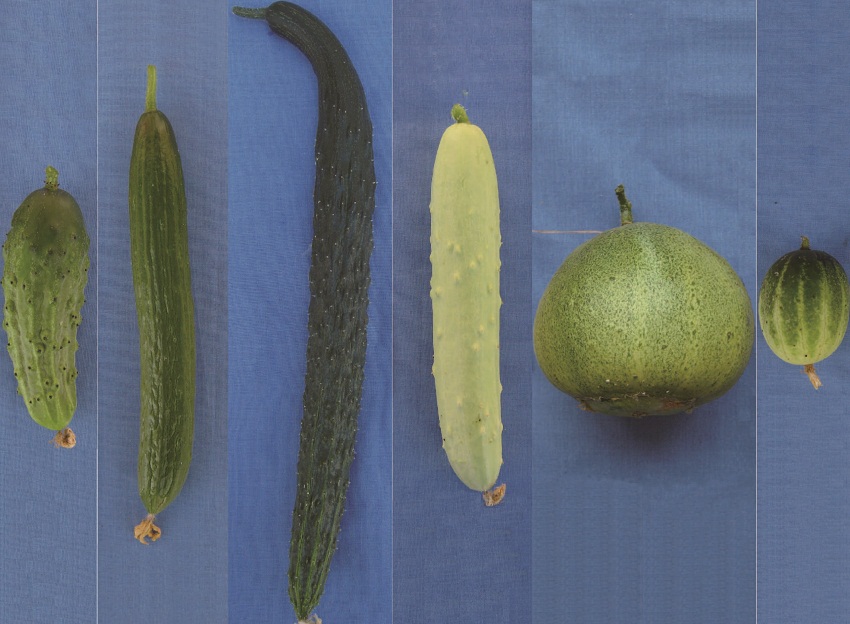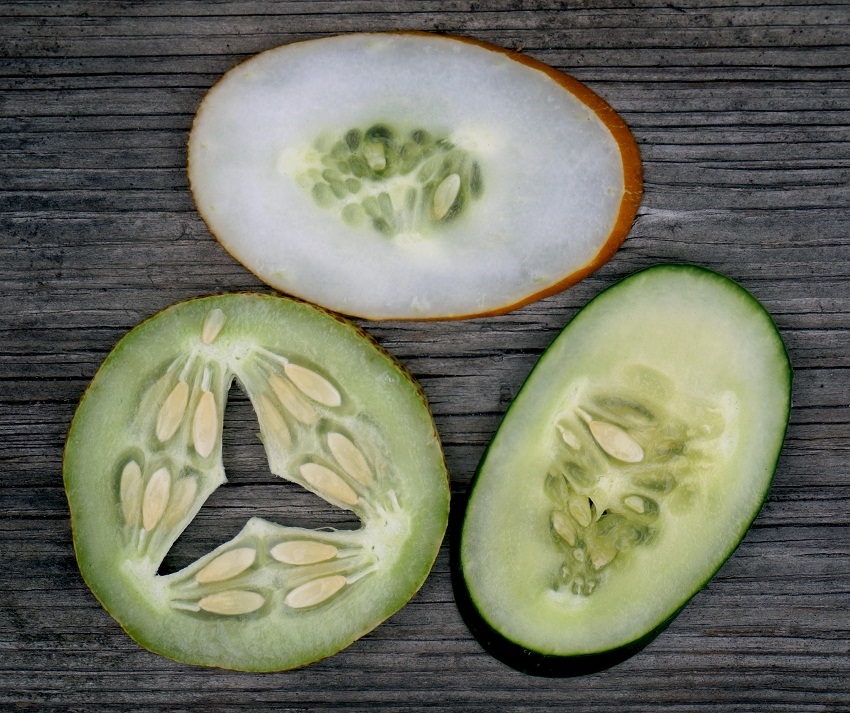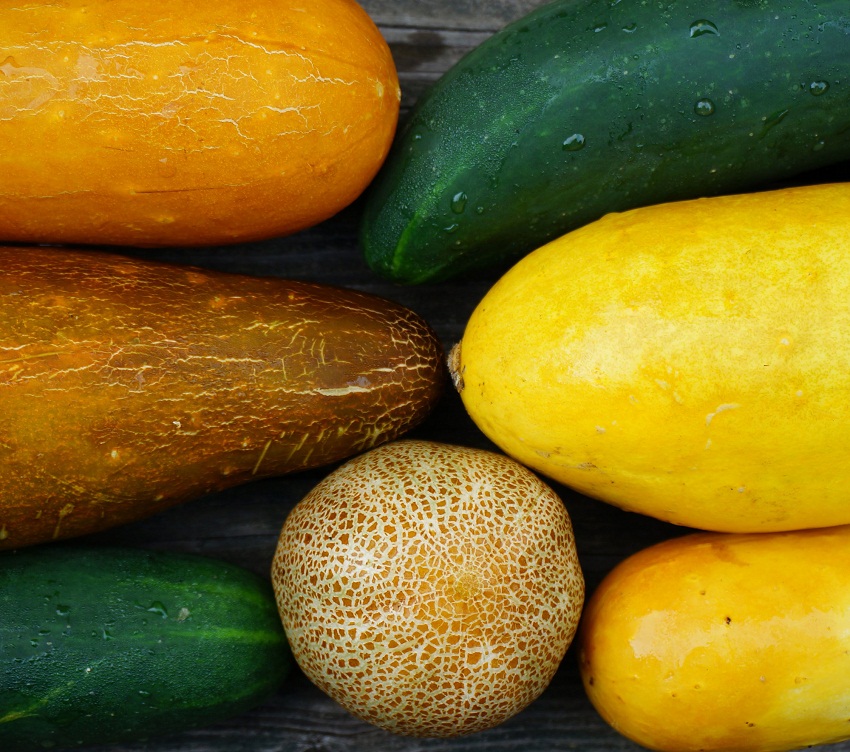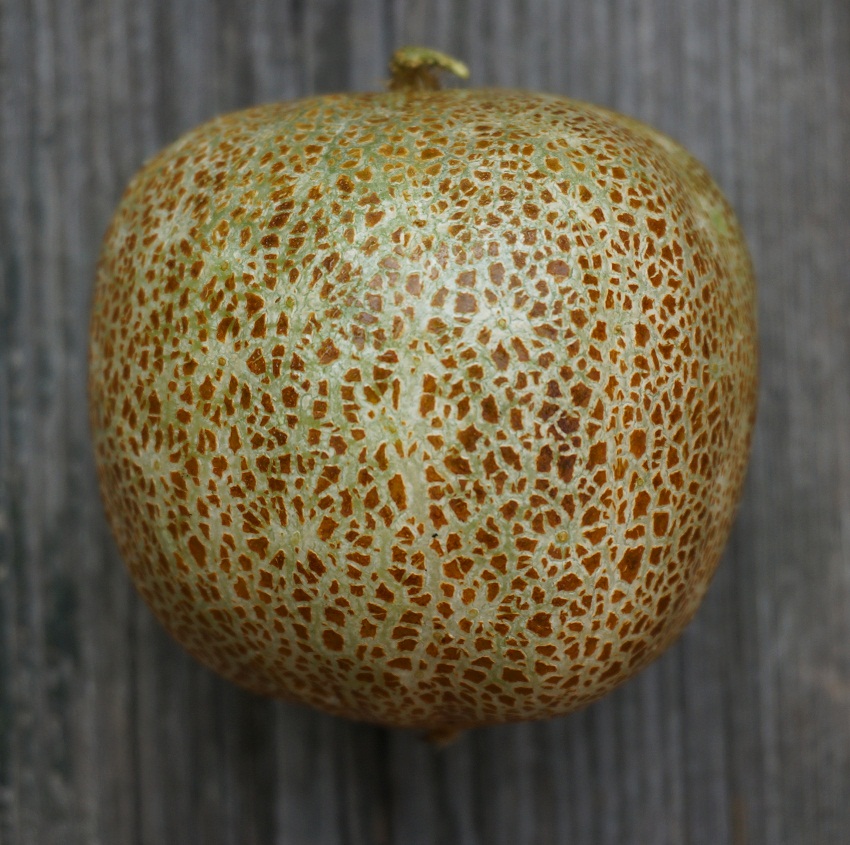Chefology: Rethinking the Cucumber
Summer is long gone, and cold nights have begun to settle in for good. As we put our community garden plot to rest for the winter, we’ve been reflecting back on the summer’s harvest and what we’ve learned from another year of dabbling in food production on our rooftop garden. Each year, we are reminded just how hard it is to grow food. We also tinker with rare varieties of some fruit or vegetable to explore the hidden diversity and history of something that we think we know so well. This year, we fell in love with exotic cucumbers.
Cucumbers (science calls them Cucumis sativus) are one of our oldest domesticated crops. Cukes are close cousins to the other “cucurbits” (named for the plant family they all belong to, the Cucurbitaceae), which includes melon, watermelon, pumpkin and squash. Scientists believe cucumbers originated in India and were introduced to China, Europe and ultimately the Americas. A recent DNA-sequencing study of a cucumber mega-collection (yep, that’s a thing) identified three major groups of cucumbers that span shapes, sizes, colors, and flavors (see photo below). The ancestor of our domesticated cucumber is a feisty-looking creature called Cucumis hystrix. Just over an inch long and completely covered in spikes, it’s impressive to think of how far the cucumber has come.

Three groups of cucumbers span size, shape, and color. Left two cucumbers are ‘Western’ cucumbers from Europe, middle two are from Eastern China, and the two cucumbers on the far right are from India and Western China, where the cucumber originated. Photo from PLoS One.
As the cucumber spread throughout the world, different cultures selected for traits that they desired. Western cultures have focused on appearance and high productivity, doing their best to completely eliminate those pesky spines from the skin while making large vegetables. In Eastern cultures, particularly in China and India, flavor was more important than appearance during cucumber breeding. Asian cucumbers have appearances that would alarm and confuse the average Western cucumber shopper, but actually taste more like a cucumber. Citrus, honey, and bitterness are all more pronounced in the flavor profiles of these older cucumber varieties.
We could see and taste the lost origins of the cucumber in some of the varieties we planted in our garden this summer. Our favorite exotic cucumber is an aptly-named variety called “Little Potato.” When you slice through that thick, scaly skin, you see that familiar juicy cucumber flesh. Hints of citrus and refreshing bitterness made this a great cucumber for eating fresh or as a cocktail garnish. They were also lovely conversation pieces at summer parties.
Poona Kheera was another Indian cucumber that impressed us with its versatility and durability. Its skin goes from thin and yellow to thick and bronze as the cucumber ages on the vine. This was a perfect grilling cucumber, with a dense and relatively dry flesh perfect for soaking up flavors in summer salads. It also had an impressive shelf life. We left several of these bronze beauties on our counter at room temperature for three weeks, and they were still perfect for grilling. Those pampered cucumbers from the grocery store? They would be a wilted pile of mush after a week.

Slices of “little potato” cucumber (bottom left), Poona Kheera (top),
standard English cucumber (bottom right) . Photo by Ben Wolfe.
Most of these exotic cucumbers aren’t available from Boston area food purveyors, so they don’t make it into the restaurant scene. Eva’s Garden does sell the Mexican sour cucumber (it’s not technically a ‘true’ cucumber, but we won’t go into that) and Scott loves to incorporate them into his late summer dishes at No. 9 Park. For Scott, he appreciates how exotic cucumbers challenge a guest’s preconceived notions of a familiar food. We have all eaten a cucumber. Everyone can identify a green English cucumber. But when you describe a dish and point out a cube with a brown-mottled skin or a tiny sphere that resembles a miniature watermelon, then explain that it is a cucumber, diners are suddenly intrigued. And once they find that it is the strongest and cleanest cucumber flavor they’ve ever tried, they too are hooked on exotic cucumbers.




